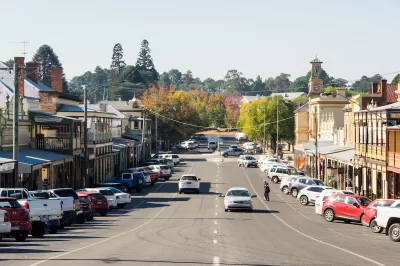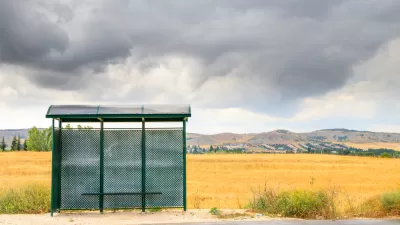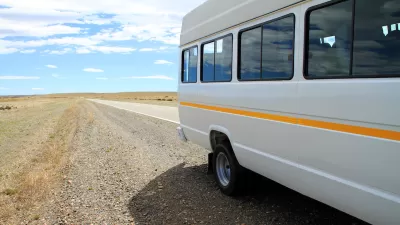On Transit Equity Day, reminding policymakers that rural communities need access to transit too.

In a piece for Transportation for America published on Transit Equity Day, Mehr Mukhtar calls for more resources for overlooked rural communities that often lack public transit options. Mukhtar notes that rural areas “perceived as areas that do not need access to transit due to the sprawling nature of the communities and assumed access to private vehicles.”
But that’s not true for many rural residents. “In reality, more than one million households in rural areas do not have access to a car. In fact, the majority of counties with zero-car households are in rural communities, highlighting the brazen need to invest in public transit.”
According to Mukhtar, “There are a lot of affordable, attainable solutions to encourage active and multimodal transportation in rural America. Implementing Complete Streets, more effective and multimodal-oriented land-use approaches, and strategic transit planning would all result in more mobility options for residents, as well as significant benefits, including healthier and more economically prosperous places.”
Rural areas can also be a primary beneficiary of on-demand microtransit, which can more flexibly serve areas with low populations and/or where fixed-route transit is impractical or too costly.
Ultimately, Mukhtar calls for more transit investment in overlooked rural communities. “By fostering equitable access to transportation options in rural communities, we can build more resilient areas where everyone can thrive.”
FULL STORY: Transit Equity Day highlights the need for transit in rural communities

Trump Administration Could Effectively End Housing Voucher Program
Federal officials are eyeing major cuts to the Section 8 program that helps millions of low-income households pay rent.

Planetizen Federal Action Tracker
A weekly monitor of how Trump’s orders and actions are impacting planners and planning in America.

Ken Jennings Launches Transit Web Series
The Jeopardy champ wants you to ride public transit.

Washington Legislature Passes Rent Increase Cap
A bill that caps rent increases at 7 percent plus inflation is headed to the governor’s desk.

From Planning to Action: How LA County Is Rethinking Climate Resilience
Chief Sustainability Officer Rita Kampalath outlines the County’s shift from planning to implementation in its climate resilience efforts, emphasizing cross-departmental coordination, updated recovery strategies, and the need for flexible funding.

New Mexico Aging Department Commits to Helping Seniors Age ‘In Place’ and ‘Autonomously’ in New Draft Plan
As New Mexico’s population of seniors continues to grow, the state’s aging department is proposing expanded initiatives to help seniors maintain their autonomy while also supporting family caregivers.
Urban Design for Planners 1: Software Tools
This six-course series explores essential urban design concepts using open source software and equips planners with the tools they need to participate fully in the urban design process.
Planning for Universal Design
Learn the tools for implementing Universal Design in planning regulations.
Heyer Gruel & Associates PA
Ada County Highway District
Institute for Housing and Urban Development Studies (IHS)
City of Grandview
Harvard GSD Executive Education
Toledo-Lucas County Plan Commissions
Salt Lake City
NYU Wagner Graduate School of Public Service





























